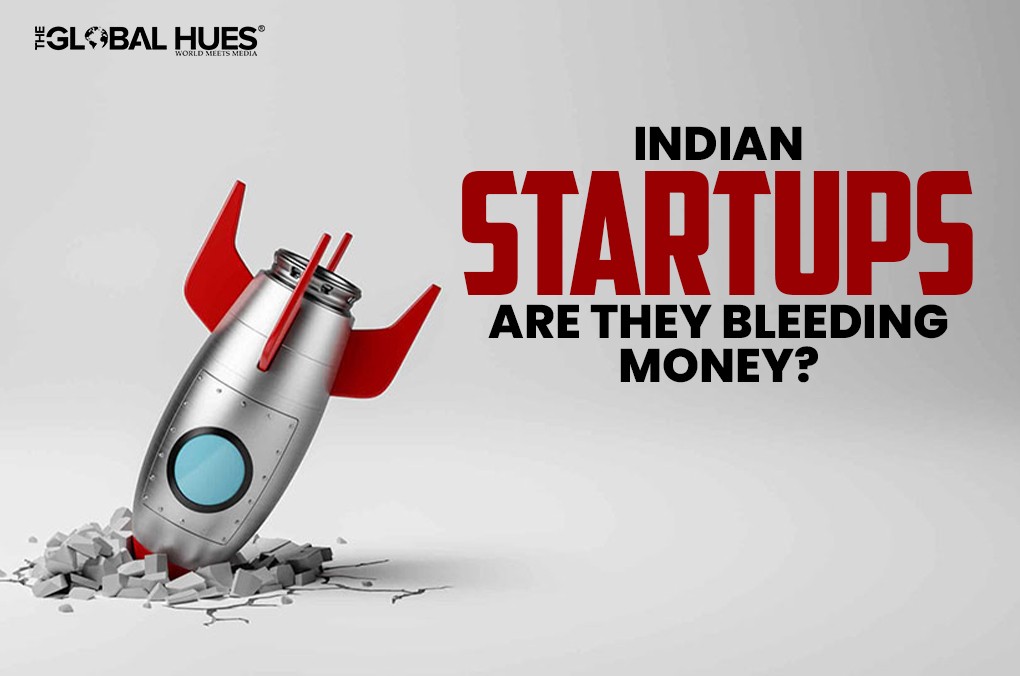Indian startups are losing billions of dollars every year. Although there’s a growing startup culture with numerous new businesses booming, many of them fail within their first year of inception. And those who manage to survive most of the time are acquired by the bigger fish in the market. But are these big fishes really big or just disguising themselves with shiny facades, hiding their reality?
In India, the government is offering multiple schemes for startups, as they will contribute to the country’s GDP and reduce its reliance on other countries for most things. This initiative hasn’t gone unnoticed by the entrepreneurs in the financial year 2022-2023 as roughly 13,000 startups were registered. However, starting a company is a risky business. With cut-throat competition in the market, creating brand value is a big challenge, which leads Indian startups to bleed money and suffer losses.
The Current Scenario
Indian startups with multi-billion dollar valuations are bleeding money and operating at a loss. In the following table, we have provided a summary of India’s top startups operating at a loss, with their respective inception years, loss for the FY 2022, and current valuation.
| Startup | Starting Year | Operating Loss in FY 2022 (in Crores Rs) | Valuation (in billions of USD) |
| Byju’s | 2008 | 2022 audited earnings to be filed by Sept 2023 | 5.1 |
| Paytm | 2010 | 2396 | 6.5 |
| Ola | 2010 | 1522 | 3.5 |
| Swiggy | 2014 | 4400 | 10.7 |
| Zomato | 2008 | 1222 | 5.4 |
| Meesho | 2015 | 3251 | 4.4 |
The above companies are in the top 10 lists of Indian startups, according to their valuations, with Byju’s on top of the list, followed by Paytm. It is shocking to conclude that these big giants are submerged in losses
Why Are These India Startups Bleeding Money?
-
BYJU’S
Competition in the Ed-Tech Industry: The Ed-tech industry is facing intense competition. Companies like Unacademy, PW, Vedantu, and others are giving tough competition to Byju’s. On one side, these companies are bringing the price down in the market, and on the other hand, teachers are providing free classes on platforms like YouTube. Not only online coaching companies but offline coaching is also eating up the market share of Byju’s.
Expansion: Byju’s wants to expand in all fields and go global. This step requires a humongous amount as it involves buyouts of other small ed-tech companies, acquisition and marketing expenses. The companies that are under Byju’s are also underperforming, leading it to face severe losses.
-
PAYTM
Paytm, the company that taught us to scan and pay, is undoubtedly innovative with its services. However, soon after the launch of Paytm, various copycat models also launched, giving cut-throat competition to Paytm.
Multiple services: To tackle competition in the market, Paytm began to incorporate other services on its app. There was a time when it became one of the top e-commerce spaces, and in addition to that, it still allows users to invest money in mutual funds, book travel tickets, movies, gold bonds and more. To achieve these kinds of services, Paytm has made several acquisitions of other small companies which led to the outflow of money but it is yet to recover the cost and become profitable.
-
OLA
Operational loopholes: The online taxi company that came with Uber’s business model is also suffering losses. The major reason behind it is the loopholes in its operations. Taxi contractors identified these loopholes and ask the customers to cancel the ride to avoid paying a commission to OLA, customers only look for their benefit and make a private arrangement leaving Ola outside.
Cost: India is still developing, various people don’t have the purchasing power to use cabs for their daily commute. Hence, companies like Rapido are growing significantly as it offers a 2-wheeler Bike Taxi at a relatively less cost.
Expansion: Ola is not limited to providing cab services anymore, with its very popular and innovative electric scooters Ola has won people’s hearts. However, Ola is focused on penetrating the Indian motor market and not on making any profits. The innovativeness in its model is truly an implication of its heavy expenditure on research and development.
-
SWIGGY AND ZOMATO
Swiggy and Zomato have the core business model of becoming a mediator for restaurants that don’t have their dedicated delivery service and customers. It is worth noting that both these companies have tapped an untapped market through their innovative business model. However, these two are the only big fishes, giving each other severe competition for market share.
Marketing: Both companies are investing heavily in marketing. There is rarely a day when we don’t receive any notifications from their apps or emails.
Cluttered business model: The business model is innovative but cluttered too. These companies have a very small role to play in delivery, yet they have to answer customers’ problems and suffer losses, even though it may be the fault of restaurants. Both delivery executives and restaurants play the blame game for any inconvenience suffered by customers.
-
MEESHO
With its business model of a social commerce website, Meesho mostly caters the resellers. It doesn’t charge a single rupee from sellers, and the major source of its income is advertisements and data that it collects over the period.
Promotion and advertisement: Meesho invests heavily in promotional content, making its expenses higher than its income.
Expansion: Meesho is also expanding in other categories, submerged in long-term loans by investors.
Summing Up
Startup culture is booming in India but reaching on top and retaining that position is another thing. Various Indian startups are losing money and operating at losses because of several factors like severe competition, copycat models, continuous expansion, huge marketing costs and more.



